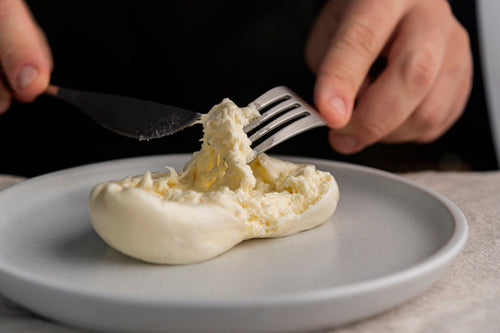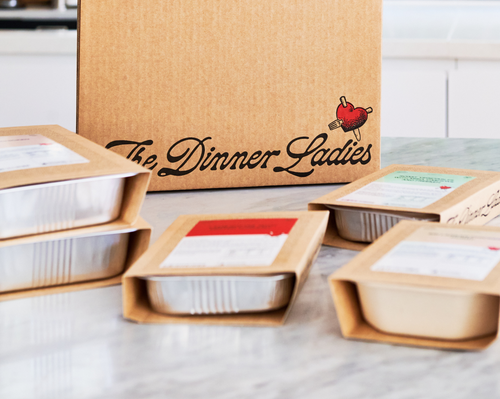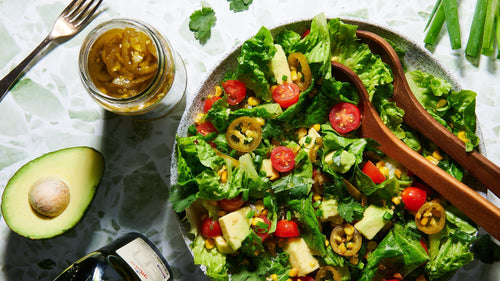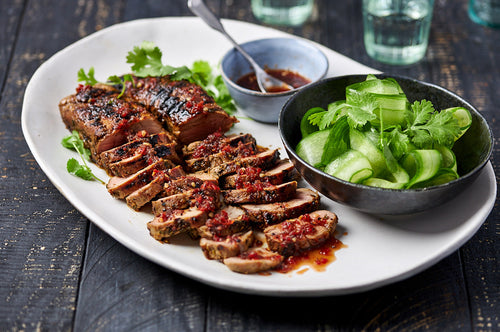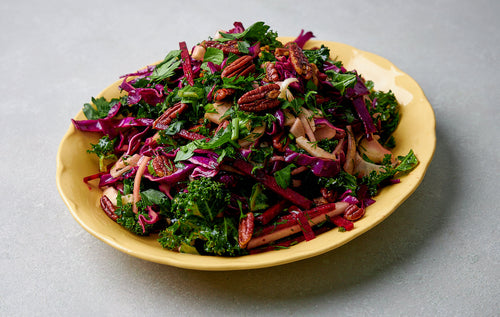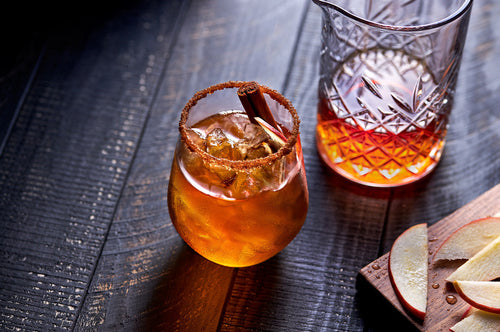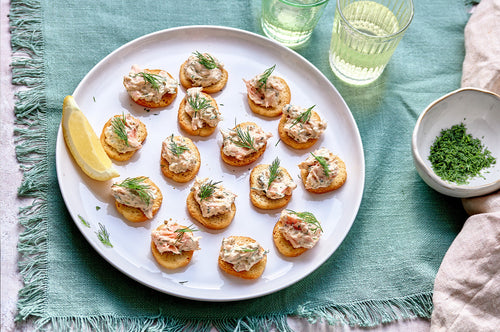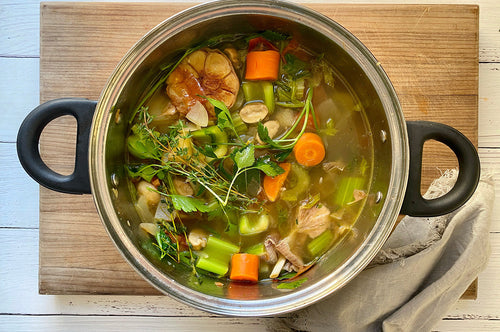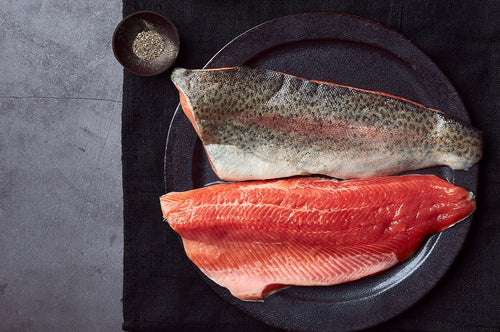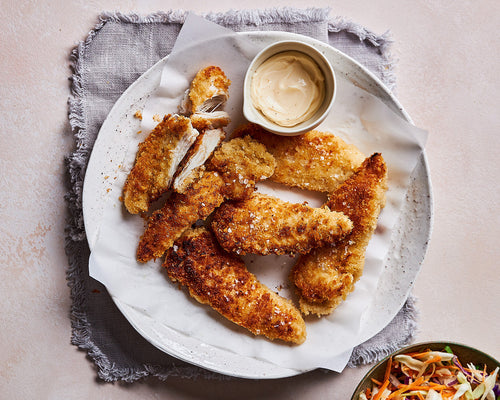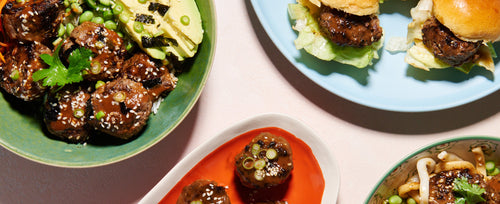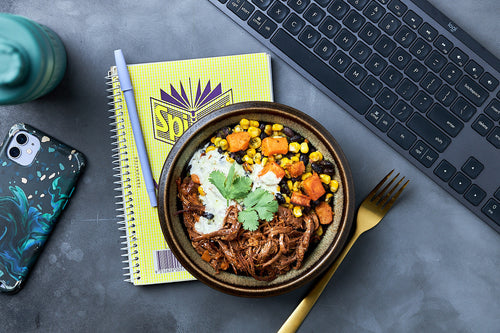Once it was a simple (if somewhat dull) choice: vegetable oil for frying, or olive oil for salad dressings. Now there’s a myriad of delicious oils on the supermarket shelves – all with their own taste, personality and best use.
Which to choose? Sometimes it just comes down to flavour, but often you need to consider ‘smoke-point’ – the temperature at which an oil starts to overheat, break down and produce smoke.
Some oils cope well with robust, high-heat cooking; others are better used in dressings or as the finishing delicate touch to a dish.
Some oils cope well with robust, high-heat cooking; others are better used in dressings or as the finishing delicate touch to a dish.
Avocado Oil
Flavour: Mild, creamy, buttery
Cold-pressed from avocados, this has an unexpectedly high smoke point, so is good for many cooking methods. Avocado oil is high in monounsaturated fats and antioxidants, which help to protect against inflammation in the body. It is, however, more expensive than other neutral oils.
Uses: Frying; stir-frying; roasting; baking; dressings
Cold-pressed from avocados, this has an unexpectedly high smoke point, so is good for many cooking methods. Avocado oil is high in monounsaturated fats and antioxidants, which help to protect against inflammation in the body. It is, however, more expensive than other neutral oils.
Uses: Frying; stir-frying; roasting; baking; dressings
Coconut Oil
Flavour: Mild, with a sweet aroma
Extracted from coconut flesh, coconut oil is versatile for both savoury cooking and sweet baking. It can withstand high temperatures, so is good for frying, but (unexpectedly for a plant product) it’s rich in saturated fats!
Equally at home in both a stir-fry and a chocolate cake, this is the Houdini of oils, magically transforming from liquid to solid at the merest hint of a cold day.
Uses: Frying, cooking and baking; also makes for a great moisturiser for skin and hair!
Extracted from coconut flesh, coconut oil is versatile for both savoury cooking and sweet baking. It can withstand high temperatures, so is good for frying, but (unexpectedly for a plant product) it’s rich in saturated fats!
Equally at home in both a stir-fry and a chocolate cake, this is the Houdini of oils, magically transforming from liquid to solid at the merest hint of a cold day.
Uses: Frying, cooking and baking; also makes for a great moisturiser for skin and hair!
Almond Oil
Flavour: Mild and slightly sweet
Almond oil is versatile and suitable for both cooking and dressings. It adds a subtle almond flavour to dishes.
Almond oil is versatile and suitable for both cooking and dressings. It adds a subtle almond flavour to dishes.
Uses: Sautéing; roasting; baking; salad dressings
Canola Oil
Flavour: Light and subtle
Canola oil is extracted from rapeseed. With a light flavour and high smoke point, like sunflower oil, its neutral taste lets it enhance the natural flavours of other ingredients.
Canola oil is low in saturated fats and contains plenty of anti-inflammatory omega-3 fats, but it can start to taste ‘fishy’ as it ages: generally, canola oil lasts less than a year after opening and about two years unopened.
Uses: Frying, baking (as a substitute for butter) and salad dressing
Canola oil is extracted from rapeseed. With a light flavour and high smoke point, like sunflower oil, its neutral taste lets it enhance the natural flavours of other ingredients.
Canola oil is low in saturated fats and contains plenty of anti-inflammatory omega-3 fats, but it can start to taste ‘fishy’ as it ages: generally, canola oil lasts less than a year after opening and about two years unopened.
Uses: Frying, baking (as a substitute for butter) and salad dressing
Cashew Oil
Flavour: Mild and subtly nutty
Uses: Sautéing; roasting; salad dressings
Flaxseed Oil
Flavour: Delicate and nutty
Pressed from flaxseeds, this oil is rich in omega-3 fatty acids but not suitable for cooking at high temperatures.
Uses: Salad dressings and drizzling over finished dishes.
Flavour: Delicate and nutty
Pressed from flaxseeds, this oil is rich in omega-3 fatty acids but not suitable for cooking at high temperatures.
Uses: Salad dressings and drizzling over finished dishes.
Grapeseed Oil
Flavour: Light, slightly nutty
Extracted from grape seeds, this oil has a high-smoke point, making it highly versatile.
Uses: High-heat frying, sautéing and salad dressings
Flavour: Light, slightly nutty
Extracted from grape seeds, this oil has a high-smoke point, making it highly versatile.
Uses: High-heat frying, sautéing and salad dressings
Hazelnut Oil
Flavour: Robust and intense
Adds a distinctive taste to salads, especially those with bitter greens such as rocket.
Adds a distinctive taste to salads, especially those with bitter greens such as rocket.
Uses: Salad dressings; baking; to drizzle over finished desserts
Macadamia Nut Oil
Flavour: Rich and butter-like with a hint of sweetness
Uses: High-heat cooking, such as frying and searing; salad dressings; marinades
Olive Oil
Flavour: Strong, robust and fruity (extra virgin) to mild (olive oil)
Derived from pressed olives, olive oil is categorised into various grades, with extra virgin olive oil being the highest quality (and most expensive). Extra virgin is cold pressed, so strong in natural flavour, colour and aroma.
Extra-virgin olive oil is high in monounsaturated fats with high levels of antioxidants and anti-inflammatory properties that can lower LDL cholesterol.
While it used to be thought that olive oil was unsuitable for cooking, that idea has fallen by the wayside now, especially with more people trying to eat a Mediterranean diet. Many people now use olive oil for everything, taking care not to overheat it.
Uses: Low-temperature cooking; dressings; to drizzle over pasta and cooked vegies; as a dip for bread, instead of butter
Derived from pressed olives, olive oil is categorised into various grades, with extra virgin olive oil being the highest quality (and most expensive). Extra virgin is cold pressed, so strong in natural flavour, colour and aroma.
Extra-virgin olive oil is high in monounsaturated fats with high levels of antioxidants and anti-inflammatory properties that can lower LDL cholesterol.
While it used to be thought that olive oil was unsuitable for cooking, that idea has fallen by the wayside now, especially with more people trying to eat a Mediterranean diet. Many people now use olive oil for everything, taking care not to overheat it.
Uses: Low-temperature cooking; dressings; to drizzle over pasta and cooked vegies; as a dip for bread, instead of butter
Peanut Oil
Flavour: Neutral, mild with a hint of nuttiness
Peanut oil has a high smoke point and can withstand high heat before it starts to break down. It’s a good source of vitamin E and antioxidants as well as heart-healthy monounsaturated fats.
Uses: Frying, stir-frying and deep-frying; also for Asian-style dressings and sauces
Peanut oil has a high smoke point and can withstand high heat before it starts to break down. It’s a good source of vitamin E and antioxidants as well as heart-healthy monounsaturated fats.
Uses: Frying, stir-frying and deep-frying; also for Asian-style dressings and sauces
Pistachio Oil
Flavour: Rich and slightly sweet
Pistachio oil is delicate and not recommended for high-heat cooking.
Pistachio oil is delicate and not recommended for high-heat cooking.
Uses: Salad dressings; drizzling over grilled vegetables; drizzling over desserts
Rice Bran Oil
Flavour: Mild
Extracted from the germ and inner husk of rice, this oil has a high smoke point. Rich in monounsaturated and polyunsaturated fats, so nutritionists list this as a heart-healthy oil.
Uses: Versatile – good for frying at high temperatures and for dressings
Extracted from the germ and inner husk of rice, this oil has a high smoke point. Rich in monounsaturated and polyunsaturated fats, so nutritionists list this as a heart-healthy oil.
Uses: Versatile – good for frying at high temperatures and for dressings
Sesame Oil
Flavour: Nutty, intense and distinctive
Made from sesame seeds, sesame oil comes in two types: light and dark.
Uses: Frying (light sesame oil); dressings, marinades and Asian cooking (dark sesame oil)
Made from sesame seeds, sesame oil comes in two types: light and dark.
Uses: Frying (light sesame oil); dressings, marinades and Asian cooking (dark sesame oil)
Sunflower and Safflower Oil
Flavour: Light flavour and light colour
Made from sunflower seeds, this oil has a high smoke point. High-oleic sunflower oil, in particular, is high in vitamin E and healthy polyunsaturated fats (see Vegetable oil, below). Its neutral flavour lets other more-showy ingredients shine through. A shy achiever in the oil world!
Uses: Stir-frying; frying; baking; roasting
Made from sunflower seeds, this oil has a high smoke point. High-oleic sunflower oil, in particular, is high in vitamin E and healthy polyunsaturated fats (see Vegetable oil, below). Its neutral flavour lets other more-showy ingredients shine through. A shy achiever in the oil world!
Uses: Stir-frying; frying; baking; roasting
Vegetable Oil
Flavour: Neutral
This is typically a blend of different oils, and has long been a go-to kitchen staple with its neutral taste and high smoke point. It’s often made up of corn or soybean oil, or a blend that may include canola, corn, soybean, cottonseed, or sunflower oil. While they’re healthier than solid fats, these oils don’t have the health benefits of the monounsaturated fats found in olive, avocado, peanut and canola oil.
Vegetable oil and sunflower oil are often compared, as being similarly neutrally flavoured.
Vegetable oil is a blend of different oils and contains high levels of pro-inflammatory omega-6 fatty acids. While sunflower oil – particularly high-oleic sunflower oil – has high levels of vitamin E and polyunsaturated fats that can help reduce inflammation.
Uses: Stir frying; roasting; baking
This is typically a blend of different oils, and has long been a go-to kitchen staple with its neutral taste and high smoke point. It’s often made up of corn or soybean oil, or a blend that may include canola, corn, soybean, cottonseed, or sunflower oil. While they’re healthier than solid fats, these oils don’t have the health benefits of the monounsaturated fats found in olive, avocado, peanut and canola oil.
Vegetable oil and sunflower oil are often compared, as being similarly neutrally flavoured.
Vegetable oil is a blend of different oils and contains high levels of pro-inflammatory omega-6 fatty acids. While sunflower oil – particularly high-oleic sunflower oil – has high levels of vitamin E and polyunsaturated fats that can help reduce inflammation.
Uses: Stir frying; roasting; baking
Walnut Oil
Flavour: Rich and nutty
Made from roasted or cold-pressed walnuts, due to its delicate nature, this oil isn’t recommended for cooking at high temperatures.
Uses: Salad dressings; to drizzle over roast vegies or pasta dishes just before serving
Made from roasted or cold-pressed walnuts, due to its delicate nature, this oil isn’t recommended for cooking at high temperatures.
Uses: Salad dressings; to drizzle over roast vegies or pasta dishes just before serving
If you liked this, you might also like:

